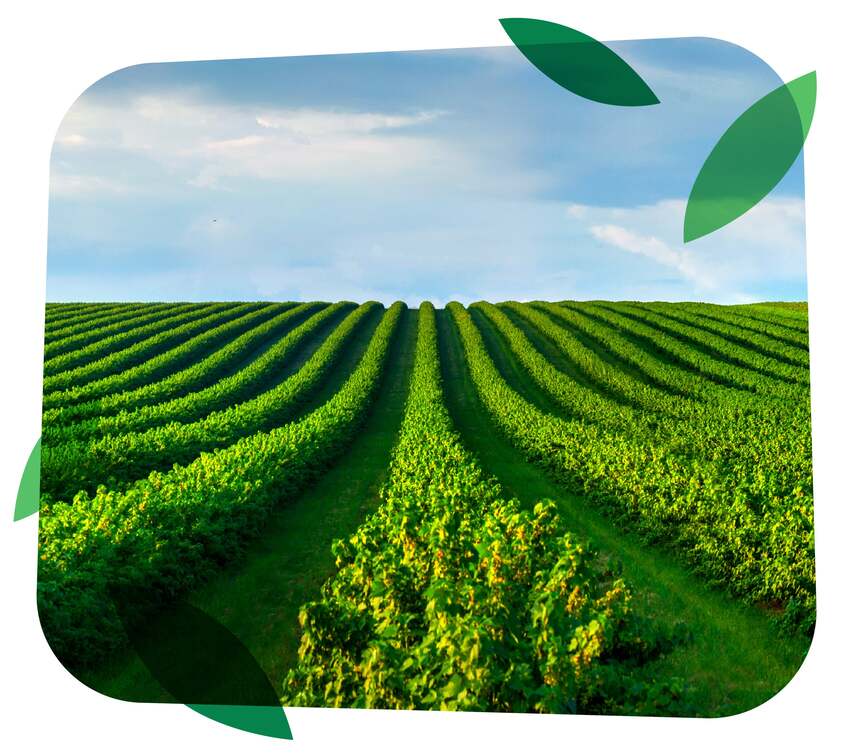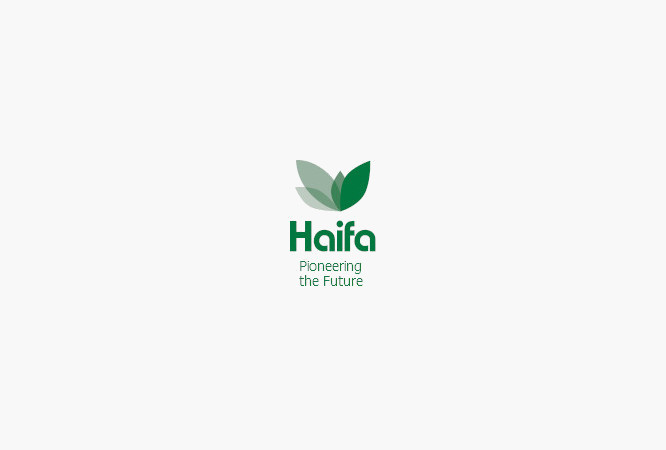Which fertilizer gives the best result for the fertilization of dry beans? And which one is preferable for snap beans or broad beans? Find out in our thorough fertilization program
Fertilization of french beans
Growing method: Open field.
Plant density: 100,000 - 350,000 plants / ha.
Expected yield: 9-20 ton/ha, depending on variety and method of harvesting (manual or mechanized).
Sensitivities:
- Salinity. The crop is very intolerant to salinity in soil and water.
- pH. The crop is very sensitive to pH6.0 . Mg deficiency may occur in acid soils.
- Micronutrients. The crop is sensitive to excessive Boron and to deficiencies of Copper, Molybdenum and particularly Zinc.
Macronutrients uptake (kg/ha) at a yield of 13 t/ha
|
N |
P2O5 |
K2O |
MgO |
CaO |
|---|---|---|---|---|
|
129 |
21 |
90-100 |
26 |
60 |
Base dressing (kg/ha)
|
N |
AS* |
P2O5 |
SSP** |
K2O |
SOP** |
|---|---|---|---|---|---|
|
21 |
100 |
40-70 |
200-350 |
50 |
100 |
Fertilizers should be well mixed into the soil, bearing in mind the plant’s sensitivity to high salt concentration.
* AS = Ammonium Sulfate (21-0-0).
** SSP = Single superphosphate (0-20-0).
***SOP = Potassium sulphate (0-50-0) partly soluble.
Fertigation
| Growth stage |
Rate (kg/ha/day) |
|||||
|---|---|---|---|---|---|---|
|
N |
P2O5 |
K2O |
Urea |
MAP* |
Multi-K** |
|
| Establishment |
0.75 |
1.0 |
0.75 |
1.3 |
1.6 |
1.6 |
| Vegetative - Flowering |
1.0 |
1.0 |
1.5 |
0.8 |
1.6 |
3.6 |
| Fruit set – End of harvest |
0.75 |
0.5 |
2.3 |
- |
0.8 |
5.0 |
* MAP = Mono-Ammonium Phosphate (12-61-0)
** Multi-K = Potassium nitrate (13-0-46)
Points to consider
- The application of fertilizers After sowing by fertigation is important in order to increase the availability of nutrients.
- It is important to include nitrate fertilizer relatively frequently (with every irrigation cycle) until well-developed foliage has been built up.
- Potassium should be applied in increased amounts while pods are starting their intensive development.
- K/N ratio should preferably be 3/1.
- Multi-K is absolutely essential at this stage as sole K source because it is fully water soluble and chloride-free. Potassium nitrate is fully consumed by the plants and thus, no salts will accumulate in the soil. This is therefore, the only way to avoid salinity, to which this crop is extremely sensitive.
Multi-K is advantageous also due to the K/N ratio of 3/1 found in it.
Optional complementary applications
Foliar application of Multi-NPK (12-2-44)
Application rate: 1-2% ; 3-4 Kg/Ha.
Application timing: Start applications when first flowers appear. repeat sprays during pod development until harvest at 7-10 days intervals.
Foliar application of Haifa MAP (12-61-0)
Application rate: 0.5 -1% ; 2-3 Kg/Ha.
Application timing: Start applications when first flowers appear. repeat sprays until pod formation at 7-10 days intervals.
Fertilization of dry beans
Macro elements removed by 1 ton marketable product
|
N |
P |
K |
Ca |
Mg |
S |
|---|---|---|---|---|---|
|
---------------------------------------------------Kg / ton----------------------------------------- |
|||||
|
36.0 |
5.0 |
12.0 |
1.1 |
1.1 |
2.5 |
Source: Kinoch: VOLHOUBARE LANDBOU, RSA. Processed by Frans Lourens, Haifa, RSA May, 1999.
Fertilization of green beans
Macro elements removed by 1 ton marketable product
|
N |
P |
K |
Ca |
Mg |
S |
|---|---|---|---|---|---|
|
---------------------------------------------------Kg / ton----------------------------------------- |
|||||
|
2.2 |
0.3 |
2.2 |
0.5 |
0.3 |
|
Source: Kinoch: VOLHOUBARE LANDBOU, RSA. Processed by Frans Lourens, Haifa, RSA May, 1999.
Plant analysis guide
Nutrient sufficiency ranges (source: A & L, Agronomy Handbook, Ankerman & Large Eds.)
| Beans |
N |
S |
P |
K |
Mg |
Ca |
Na |
B |
Zn |
Mn |
Fe |
Cu |
Al |
Mo |
|---|---|---|---|---|---|---|---|---|---|---|---|---|---|---|
|
-------------------- % -------------------- |
------ p.p.m -------- |
|||||||||||||
| From |
3.60 |
0.25 |
0.30 |
2.00 |
0.35 |
1.00 |
0.01 |
25 |
35 |
50 |
50 |
8 |
20 |
|
| To |
6.00 |
0.70 |
0.70 |
4.00 |
1.00 |
3.00 |
0.05 |
70 |
60 |
100 |
200 |
30 |
250 |
|
Plant part to sample
| time of sampling | Midgrowth |
| Plant part | Petiole of 4th leaf from tip |
Plant tissue sampling procedures
|
Stage of growth |
Plant part |
|---|---|
| Prior to or at initial bloom, before pod set | Fully developed leaves at top of plant |
Snap beans
Growing method: Open field.
Plant density: 100,000 - 350,000 plants / ha.
Expected yield: 9-20 ton/ha, depending on variety and method of harvesting (manual or mechanized).
Days to maturity: 52 - 60.
Sensitivities:
- Salinity. The crop is very intolerant to salinity in soil and water.
- pH. The crop grows best at pH 6.0-6.5. Micronutrient deficiencies/ toxicity may occur in more acid values. It is necessary to lime the soil 2-4 months prior to planting the beans.
- Micronutrients. The crop is sensitive to excessive Boron and to deficiencies of Copper, Molybdenum and particularly Zinc.
Macronutrients to be supplied (kg/ha) at a yield of 13 t/ha
|
N |
P2O5 |
K2O |
MgO |
CaO |
|---|---|---|---|---|
|
90-110 |
80-90 |
100-130 |
17 |
50 |
Base Dressing
Apply all the P, Mg, Ca, and 1/3 of the N and 2/3 of the K, best as broad-casting on the entire area. Band placement below the seeding row is risky due to the susceptibility to fertilizer burn.
Side dressing
Apply 200-230 kg of Multi-K when beans are 3-4 weeks old.
Fertilization of broad beans
Macro elements removed by 1 ton marketable product
|
N |
P |
K |
Ca |
Mg |
S |
|---|---|---|---|---|---|
|
---------------------------------------------------Kg / ton----------------------------------------- |
|||||
|
25.5 |
2.6 |
15.3 |
|||
Source: Kinoch: VOLHOUBARE LANDBOU, RSA. Processed by Frans Lourens, Haifa, RSA May, 1999.
Soilless fertilization of beans
Nutrition database for beans
|
concentration |
|||||||
|---|---|---|---|---|---|---|---|
|
Rockwool |
Rockwool (reuse drainage) |
Plant – dry matter (7-8%) |
|||||
| Parameter |
Nutrient Solution |
Root Environ. |
Nutrient Solution |
Root Environ. |
Guiding Range |
Deficient |
Excessive |
| EC (mS/cm) |
1.7 |
|
|
|
|||
|
(mg/l) |
(mg/l) |
(%) |
|||||
| NH4 |
18.0 |
|
|
|
|||
| N-NH4 |
13.8 |
|
|
|
|||
| K in sap |
|
||||||
| K |
215.1 |
|
|
|
|
||
| Ca |
130.3 |
|
|
|
|
||
| Mg |
30.4 |
|
|
|
4.20 |
|
|
| N, total |
0.62 |
||||||
| NO3 |
774.0 |
|
|
|
0.22 |
||
| N-NO3 |
167.9 |
|
|
|
0.05 |
||
| S, total |
0.43 |
||||||
| SO4 |
108.1 |
|
|
|
0.62 |
||
| P |
|
||||||
| H2PO4 |
121.3 |
|
|
|
|||
|
mg/Kg (ppm) |
|||||||
| Fe |
0.559 |
|
|
|
|
||
| Mn |
0.549 |
|
|
|
|
||
| Zn |
0.262 |
|
|
|
|
|
|
| B |
0.216 |
|
|
|
|
||
| Cu |
0.032 |
|
|
|
|||
| Mo |
0.048 |
|
|
|
|||
Important note: The a/m database was prepared to fit Dutch conditions (low transpiration and low EC of the water). Considerable and proportional reduction in the concentration of the macronutrients should be required to offset for lower quality water prevailing in other conditions.
Sources:
- N. Straver. Nutrient solutions for vegetables and flowers grown in water or substrates. 10th Ed. 1994.
- C. de Kreij, Sonneveld C., Warmenhoven M.G. and Straver N.A. Guide values for nutrient element contents of vegetables and flowers under glass. 3rd Ed. 1992.
Varieties recommended for fresh market
| Variety | Approx. days to maturity |
|---|---|
| Bush, green pod Astro |
52 |
| Extender |
50 |
| Early harvest |
52 |
| Harvester |
55 |
| Half Runner Genuine White |
55-60 |
Source: Snap Bean Production flyer \ Cooperative Extension Service, University of Georgia College of Agriculture, Athens.
Fertilization
Determine fertilizer needs by a soil test. In general, 600 to 800 pounds of 10-10-10 per acre is adequate if at least ½ of the fertilizer is placed 3 inches to the side and slightly below the seed. Do not use more than 600 pounds in band placement because beans are highly susceptible to fertilizer burn.
If you broadcast the fertilizer, increase the rates by about 1/3 to 1/2. Broadcasting eliminates the danger of burn. Sidedress with an additional 20 to 30 pounds of nitrate nitrogen when beans are three to four weeks old to bring total nitrogen applied up to approximately 100 pounds per acre. Additional nitrogen may be needed if heavy leaching rains occur. If magnesium and/or zinc are low in the soil, add these elements to the fertilizer.
Source: Snap Bean Production flyer \ Cooperative Extension Service, University of Georgia College of Agriculture, Athens.
Need more information about growing beans? You can always return to the beans fertilizer .





